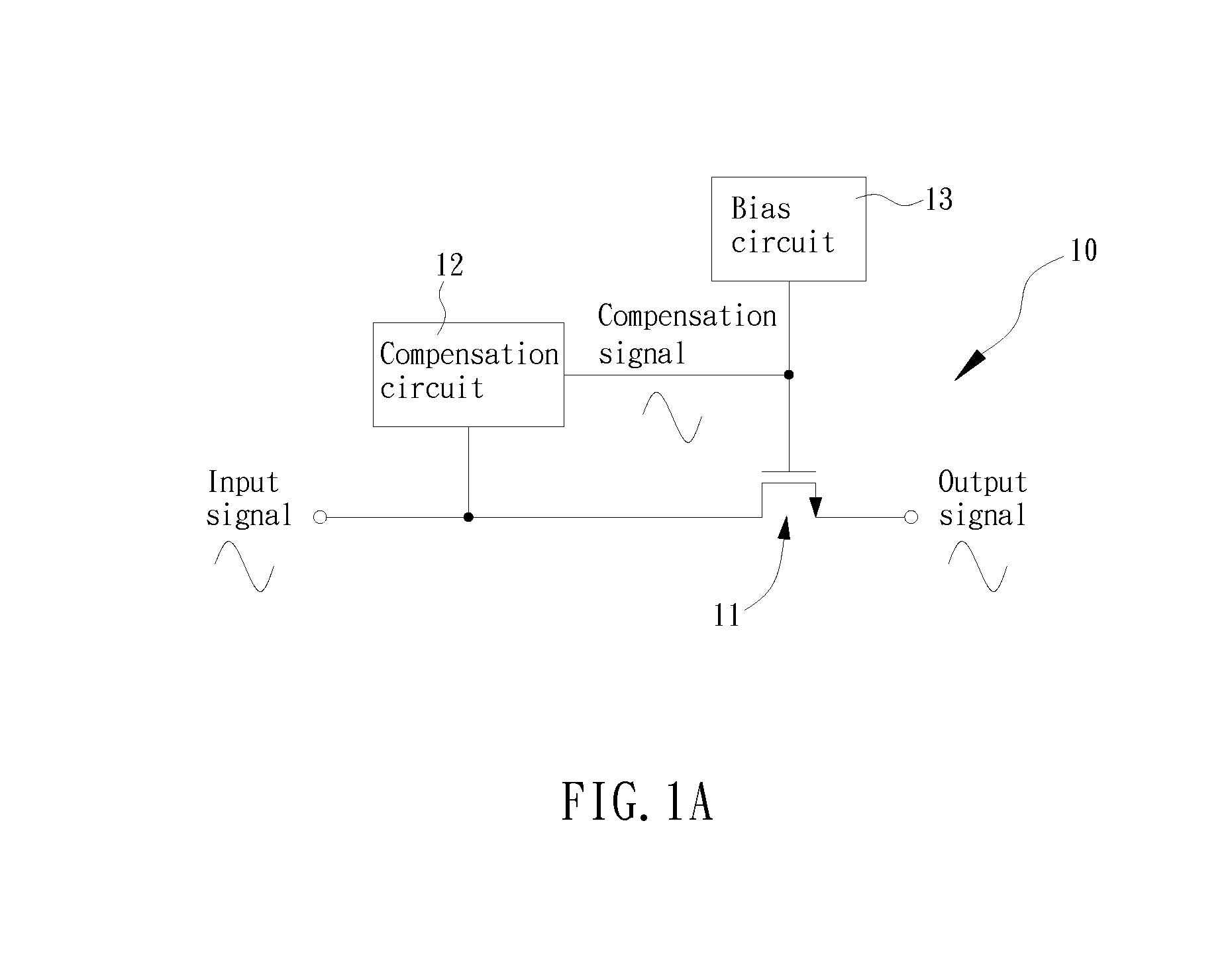Transistor resistor and associated method
a technology of resistor and resistor, which is applied in the direction of amplifiers with semiconductor devices only, amplifiers with semiconductor devices/discharge tubes, gain control, etc., can solve the problems of large resistance requirements of circuits, poor linearity, and huge challenges in modern ic design, and achieve good resistance linearity, high resistance, and high resistance.
- Summary
- Abstract
- Description
- Claims
- Application Information
AI Technical Summary
Benefits of technology
Problems solved by technology
Method used
Image
Examples
Embodiment Construction
[0018]The description below will use a MOS transistor as an example, but the scope of the invention is not limited to the MOS transistor. FIG. 1A is a diagram of a transistor resistor according to an embodiment of the invention. As shown, the transistor resistor 10 comprises a NMOS transistor 11, a compensation circuit 12 and a bias circuit 13. The NMOS transistor 11 operates in the resistive region, that is, its gate-to-source voltage VGS must be greater than a threshold voltage VT, and its drain-to-source voltage VDS must be smaller. When the NMOS transistor 11 operates in resistive region, a current iD will flow into the drain and flow out of the source, and the relationship between iD and VDS is:
iD=2K(VGS−VT)VDS Eq. (1)
[0019]where
[0020]K=12μCoxnWL,
μn and Cox are material-specific parameters, and W and L are respectively the width and length of the gate. From Eq. (1), the resistance of the NMOS transistor 11 is derived as:
RMOS=VDS / iD=1 / [2K(VGS−VT)] Eq. (2)
[0021]As shown in ...
PUM
 Login to View More
Login to View More Abstract
Description
Claims
Application Information
 Login to View More
Login to View More - R&D
- Intellectual Property
- Life Sciences
- Materials
- Tech Scout
- Unparalleled Data Quality
- Higher Quality Content
- 60% Fewer Hallucinations
Browse by: Latest US Patents, China's latest patents, Technical Efficacy Thesaurus, Application Domain, Technology Topic, Popular Technical Reports.
© 2025 PatSnap. All rights reserved.Legal|Privacy policy|Modern Slavery Act Transparency Statement|Sitemap|About US| Contact US: help@patsnap.com



